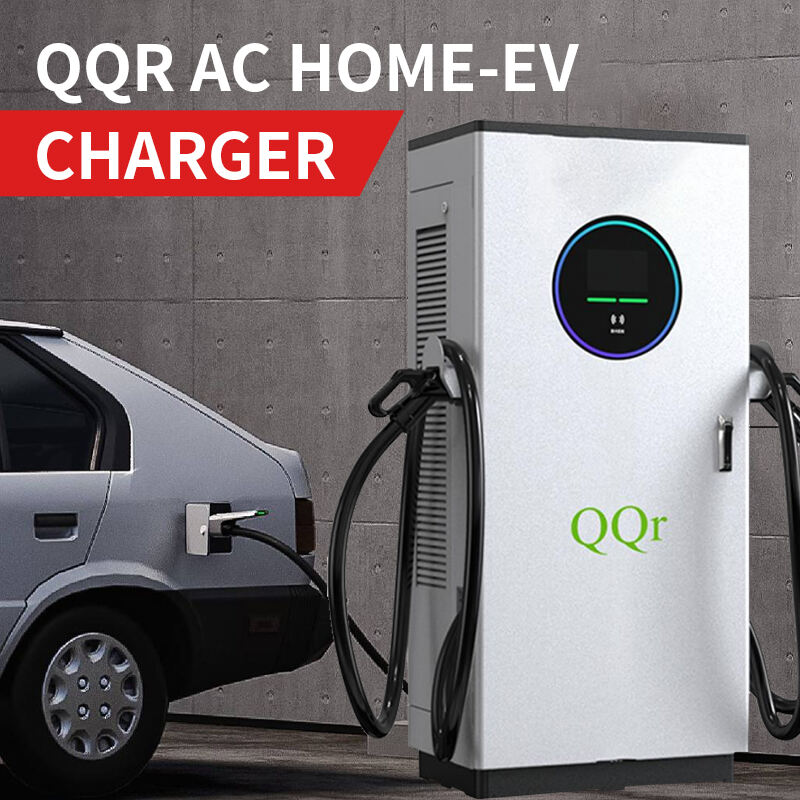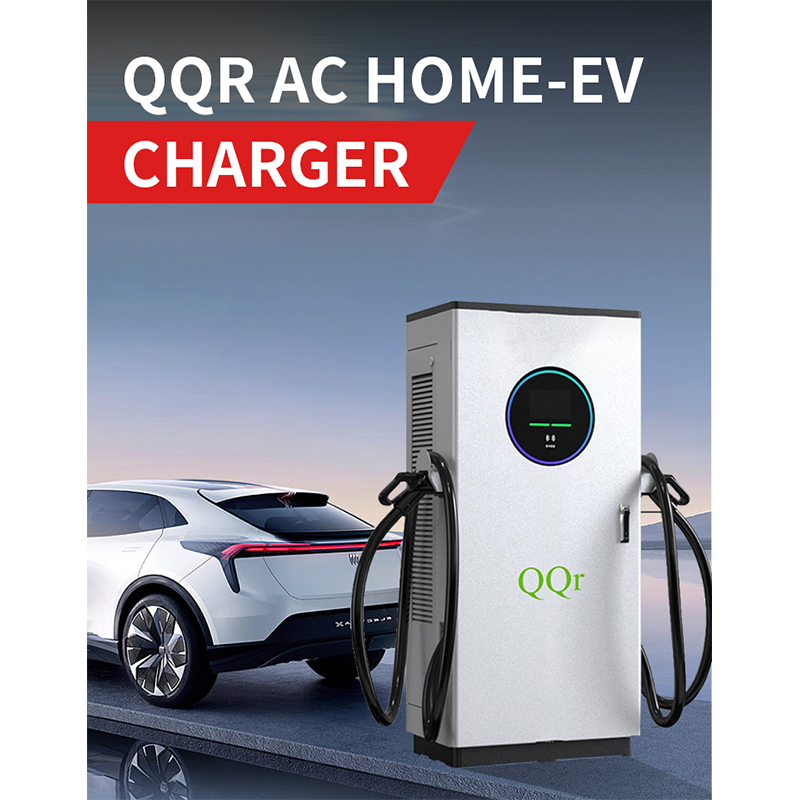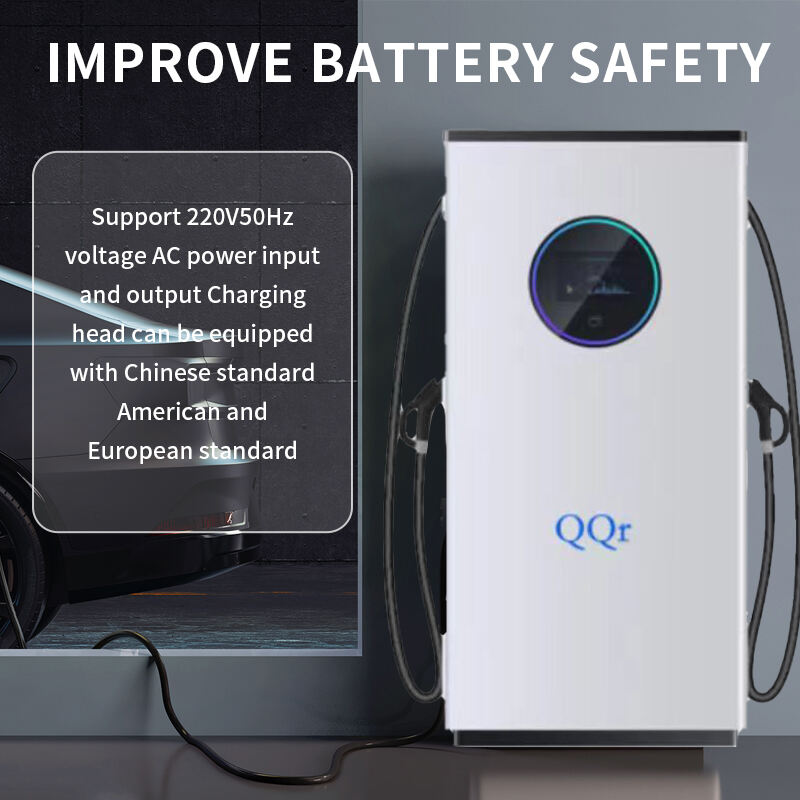Wallbox Elektrikli Araç Şarj Cihazlarının Tüketicilerin Enerji Maliyetlerini Nasıl Azaltabileceği
Wallbox EV Şarj cihazlarını Anlamak
Wallbox EV Şarj cihazları, evlerde veya işyerlerinde kullanılmak üzere tasarlanmış yenilikçi elektrikli araç şarj çözümleridir. Elektrikli araçları şarj etmek için verimli bir yöntem sunarlar, genellikle "dumb" şarj cihazları olarak adlandırılan standart duvar prizlerine daha hızlı ve daha akıllı bir alternatif olarak hareket ederler. Wallbox şarj cihazları, araç sahiplerinin EV'lerini evde rahatça şarj etmelerini sağlayarak kullanıcı deneyimini artırır ve böylece elektrikli araçların daha geniş bir şekilde benimsenmesine katkıda bulunur.
Wallbox EV Şarj cihazlarının ana özellikleri kompakt boyutlarını, değişken güç çıkışlarını ve gelişmiş teknolojileri içerir. Bu şarj cihazları kolayca duvara monte edilebilir ve sıkışık garajlardan açık hava tesisatlarına kadar çeşitli ortamlarda kullanılabilir. Tipik olarak, Wallbox şarj cihazları, kullanıcıların şarj ihtiyaçlarına en uygun modeli seçmelerine izin veren farklı amp konfigürasyonları sunar. Birçok model, kullanıcıların şarj süreçlerini uzaktan izlemelerini ve yönetmelerini sağlayan uygulama kontrolü gibi akıllı özellikleri de içerir.
Wallbox EV Şarj cihazları pazarı, elektrikli araç sahipliğinin sürekli artmasıyla desteklenerek hızla büyüyor. Küresel EV satışlarının yıllık %40 oranında artmasıyla birlikte, ev ve işyerinde şarj çözümlerine olan talep de buna göre artmaktadır. Bu büyüme, Wallbox şarj cihazlarının daha verimli enerji kullanımı sağlayarak karbon ayak izini azaltmaya katkıda bulunduğu için sürdürülebilir ulaşım yönündeki önemli bir kaydı yansıtmaktadır.
Ayrıca, Wallbox EV Şarj cihazları, araç şarjıyla ilişkili emisyonları azaltarak çevresel sürdürülebilirliği teşvik eder. Elektrikli araçların kullanımını kolaylaştırarak, bu şarj cihazları dolaylı olarak fosil yakıtlara bağımlılığı azaltır ve genel karbon emisyonlarını azaltmaya yardımcı olur. Elektrikli araç teknolojisi gelişmeye devam ettikçe, temiz ve sürdürülebilir bir enerji geleceğini desteklemek için Wallbox şarj cihazlarının rolü giderek daha önemli hale geliyor.
Wallbox EV Şarj Çözümlerinin Enerji Faturalarını Nasıl Azaltmasına Yardımcı Olduğunu
Wallbox EV şarj cihazları, enerji kullanımını optimize eden verimli şarj seçenekleri sunmak için tasarlanmıştır. Farklı şarj modları ve ayarlanabilir programlar sağlayarak, elektrikli araçların en enerji verimli şekilde şarj edilmesini sağlarlar. Bu esneklik, kullanıcıların şarj cihazlarını elektrik ücretlerinin daha düşük olduğu zamanlarda çalışmaya ayarlamalarını sağlar ve böylece sadece enerji tüketimini değil, genel maliyetleri de azaltır.
Veriler, Wallbox EV şarj cihazlarına geçmenin geleneksel şarj yöntemlerine kıyasla zamanla önemli tasarruflara yol açabileceğini göstermektedir. Wallbox şarj cihazlarına entegre akıllı teknolojiler, değişken elektrik ücretlerinden yararlanarak enerji harcamalarının azaltılmasını kolaylaştırır. Kullanıcılar bu verimli uygulamalarla şarj maliyetlerini %70'e kadar düşürebilir ve bu da ekonomik açıdan çekici bir seçim haline getirir.
Wallbox'un sunduğu akıllı şarj özellikleri, uygulama entegrasyonu ve uzak erişim, enerji tüketiminin ve harcamalarının gerçek zamanlı olarak takip edilmesini sağlar. Bu özellikler, kullanıcıların enerji kullanımlarını yakından izlemelerini, şarj tercihlerini ayarlamalarını ve nihayetinde enerji harcamalarını daha etkili bir şekilde yönetmelerini sağlar. Ayrıca, bu yönleri uzaktan kontrol etme yeteneği, daha kolaylık sağlar ve daha bilinçli enerji yönetimi kararlarına yol açar.
Son olarak, kullanıcılar şarj seanslarını akıllı bir şekilde zamanlayarak Wallbox şarj cihazları aracılığıyla maliyet azaltma stratejileri benimseyebilirler. Elektrik fiyatlarının daha düşük olduğu yoğunluk saatleri dışında şarj yapmak elektrik faturalarını önemli ölçüde azaltabilir. Ek olarak, güneş panelleri gibi yenilenebilir enerji kaynaklarının entegre edilmesi maliyet tasarrufunu daha da artırabilir ve çevresel sürdürülebilirliği teşvik edebilir. Bu stratejileri kullanarak, Wallbox kullanıcıları daha temiz bir çevreye katkıda bulunurken düşük enerji maliyetlerinden yararlanabilirler.
Gereksinimleriniz için Doğru Wallbox EV Şarj Aygıtını Seçmek
İdeal Wallbox EV şarj cihazını seçmek birkaç önemli faktörü içerir. Öncelikle şarj cihazının enerji kapasitesini düşünün. Wallbox, şarj hızlarını etkileyen 22kW ve 11kW gibi çeşitli kapasiteli şarj cihazları sunar. Evinizin elektrik sistemini değerlendirmek çok önemlidir. Seçilen şarj kapasitesini destekleyebileceğinden emin olmak için. Ek olarak, bilinçli bir karar vermek için kurulum gereksinimlerini ve bütçe kısıtlamalarını dikkate alın.
Sonra, kişisel sürüş alışkanlıklarınızı ve tipik kilometre sürüşünüzü değerlendirip enerji ihtiyacınızı belirleyin. Eğer sık sık uzun mesafeler sürüyorsanız, daha yüksek güç kapasiteli bir şarj cihazı daha uygun olabilir. Ancak, daha kısa yolculuklar için, daha düşük kapasiteli bir şarj cihazı yeterli olabilir. Bu ihtiyaçları anlamak, yaşam tarzınıza uygun bir şarj cihazı seçmenize yardımcı olacaktır.
Elektrikli aracınızla uyumluluğu da çok önemlidir. Şarj cihazının EV modelinizle uyumlu olduğundan emin olmak önemlidir. ABD'de satılan tüm elektrikli araçlar Tip 1 (SAE J1772) konektörü ile birlikte gelir, ancak gelecekteki sorunlardan kaçınmak için aracınızla uyumluluğu doğrulamak önemlidir. Son olarak, kurulum yerini düşünün. Garaj alanı ve elektrik paneline yakınlık gibi faktörler, uzun vadede rahatlık ve verimliliği sağlayan seçiminizi önemli ölçüde etkileyebilir.
Wallbox EV Şarj Aracı Ürün Özetleri
The GTD_N_120 120kW DC Şarj Cihazı endüstriyel kalite bir şarj çözümü. Her koşulda en yüksek performans için tasarlanmış. Uzun ömürlü ve güvenli bir şekilde farklı kılan çeşitli özellikler sunar. Bu model, kötü hava koşullarında güvenilir bir işleyişin sürdürülmesi için hayati önem taşıyan toz ve suya dayanıklı hale getiren IP54 koruması içerir. Şarj cihazının akıllı HMI, kullanıcıların oturumlarını kolayca yönetmelerine izin verirken,% 95'e kadar yüksek sistem verimliliği, enerjinin etkili bir şekilde kullanılmasını sağlar. Bu ürün ayrıca farklı ihtiyaçlara ve ortamlara uygun esnek şarj yapılandırmalarını da destekler.

The Etkin 120kW GTD_N_120 DC Şarj Cihazı hem güvenlik hem de verimlilik sağlamak için enerji optimizasyonu teknolojisini içerir. Tasarımı, kullanıcı etkileşimlerini kolaylaştıran sezgisel 7 inçlik LCD dokunmatik ekran ve LED göstergelerle öne çıkıyor. Bu şarj cihazları, mobil uygulama kontrolü ve olağanüstü yönetim için gelişmiş D5 platformu ile şehir ve kırsal ortamlarda en yüksek performansı sağlar. Bu teknoloji, sadece sistem verimliliğini %95'e yükseltmekle kalmaz aynı zamanda en iyi enerji yönetimi için boş zamanlı güç tüketimini de en aza indirger.

The Son nesil 160kw gtd_n_160 DC şarj cihazı eV şarjını önemli ölçüde geliştiren gelişmiş özellikler sunuyor. Daha hızlı şarj yeteneklerine sahiptir ve bu da araç ihtiyaçlarına göre güç dağıtımını optimize ederek yüksek talep uygulamalar için idealdir. En son teknoloji bakım ve bağlantı seçenekleri, sadece entegrasyonu kolaylaştırmakla kalmaz, aynı zamanda gerçek zamanlı yazılım güncellemeleri yoluyla operasyonel mükemmelliği de korur.

Pazar pozisyonu açısından, bu şarj cihazları, şehir ticaret merkezlerinden kırsal tesislere kadar çeşitli uygulamalara uygun kapsamlı çözümler sunar. Gelişmiş özellikleri ve entegrasyon yetenekleri, EV şarj cihazları pazarında rekabetçi bir konum kazandırır ve güvenilir ve verimli şarj çözümleri arayan işletmeler ve bireylere çekici gelir.
Wallbox EV şarj cihazlarının kurulumu ve bakımı
Wallbox EV şarj cihazlarının verimliliğini ve güvenliğini en üst düzeye çıkarmak için uygun kurulum önemlidir. Öncelikle aracınıza ve bir güç kaynağına kolay erişilebilmesi için garajınızın içinde ya da dışında uygun bir yer seçin. Şarj cihazının gereksinimlerini karşılayabileceğinden emin olmak için elektrik sisteminizi değerlendirin; bazen bir yükseltme gerekli olabilir. Yerel düzenlemelere uygunluğun sağlanması, özel devreler gibi elektrik gereksinimlerini göz önünde bulundurmayı içerir. Lisanslı bir elektrikçi işe almak, kurulumun tüm güvenlik standartlarına uygun olmasını ve kodlara uygun olmasını sağlar, bu da potansiyel tehlikeleri ve uyumluluk sorunlarını önlemeye yardımcı olabilir.
Profesyonel bir kurulumla kendi başına kurulum arasında karar verirken, birkaç faktör dikkate alınmalıdır. Profesyonel olarak kurulan sistemler daha yüksek başlangıç maliyetleri gerektirebilir, ancak güvenlik ve düzgün işlev güvencesini sağlar. Tersine, bir DIY yaklaşımı başlangıçta para tasarrufu sağlayabilir, ancak yerel elektrik kodlarına uyma sorunlarına neden olabilir ve yanlış kurulduğunda uzun vadeli güvenlik riskleri oluşturabilir. Çoğu kişi için, profesyonel uzmanlık, kendi başına yapmanın yararlarından daha büyüktür.
Wallbox EV şarj cihazınızın düzenli bakımı uzun ömürlü ve verimliliğini artırır. Temel bakım, toz birikmesini önlemek ve tüm yazılım güncellemelerinin derhal yüklenmesini sağlamak için rutin temizlik içerir. Bu güncellemeler genellikle performans sorunlarını önleyen geliştirmeler ve güvenlik yamaları içerir. Güvenlik kontrollerinin düzenli olarak yapılması, sürekli işlevselliği ve uyumluluğu sağlar. Sistemin çeşitli bölümlerini test ederek, gelecekte daha büyük ve pahalı onarımları azaltmak için herhangi bir sorunu erken belirleyebilirsiniz. Bu uygulamaları uygulamak şarj cihazınızın güvenilir ve güvenli kalmasını garanti eder.
Wallbox EV şarj cihazları ile finansal teşvikler ve maliyet tasarrufu
Wallbox EV Şarj cihazları, başlangıç maliyetlerini uzun vadeli tasarruflarla dengeleyerek önemli finansal faydalar sunar. Başlangıçta, bir Wallbox Pulsar Plus şarj cihazının maliyeti 649 ila 699 dolar arasında değişir ve kurulum maliyetleri elektrik gereksinimlerine bağlı olarak 799 ila 1.999 dolar arasında değişebilir. Bununla birlikte, bu ön maliyetler, yakıtta önemli tasarruflar ve Wallbox sistemindeki akıllı özelliklerin sağladığı verimli enerji yönetimi ile dengelenmektedir.
EV şarj çözümlerine yatırımı daha erişilebilir hale getirmek için çeşitli finansman seçenekleri mevcuttur. İşletmeler ve bireyler, mali yükü en aza indirerek maliyeti zaman içinde yayarak kiralama planlarını veya borçları keşfedebilirler. Bu programlar Wallbox'un gelişmiş şarj sistemlerine hemen erişimi kolaylaştırmakla kalmayıp bütçe esnekliğini de artırıyor.
Hükümet hibeleri, vergi kredileri ve yerel indirimler, Wallbox EV Şarj cihazlarıyla ilişkili toplam harcamaları daha da azaltmak için güçlü araçlardır. Birçok bölgede, bu teşvikler ekipman ve kurulum maliyetlerinin bir kısmını kapsayabilir ve elektrikli araç şarjına geçişi ekonomik olarak daha uygulanabilir hale getirebilir. Bu fırsatların farkında olmak ve kullanılması, önemli maliyet azaltımlarına yol açabilir.
Wallbox EV Şarj cihazlarıyla yatırım getirisi (ROI) elde etmek sadece bir olasılık değil, vaka çalışmaları ve istatistikler tarafından desteklenen bir olasılıktır. Kullanıcılar, benzin bağımlılığının azalması nedeniyle araç işletme maliyetlerinin azalmasını belgelemiştir. Yükseltilmiş enerji verimliliği ve yoğunluk dışı ücretlendirme programlarından kaynaklanan mali tasarruf, ikna edici bir finansal anlatıya katkıda bulunur. Wallbox ile elektrikli araç şarjına geçiş, nihayetinde ödüllendirici bir finansal getiri sağlar.
Sonuç: Wallbox EV şarj cihazlarına yatırım yapmak
Wallbox EV Şarj cihazlarına yatırım yapmak, evde şarjın kolaylığı ve potansiyel enerji tasarrufu da dahil olmak üzere uzun vadeli birçok avantaj sunar. Akıllı zamanlama ve enerji izleme gibi gelişmiş özelliklerle, bu şarj cihazları elektrikli aracınızın (EV) ihtiyacınız olduğunda her zaman hazır olmasını sağlar. EV pazarının önemli ölçüde genişleyeceği öngörüldüğünden, bu geçişe adapte olmak için güvenilir bir şarj çözümüne sahip olmak çok önemli olacaktır. Wallbox EV şarj cihazları bu artan ihtiyaçları verimli bir şekilde karşılamak için tasarlanmıştır. Gelecekteki şarj gereksinimlerinizi düşünürken, Wallbox'un yenilikçi çözümlerinin hem anlık hem de uzun vadeli avantajlar sağlayabileceğini aklınızda tutun. Şimdi yatırım yapmak, sadece mevcut EV deneyiminizi geliştirmekle kalmayacak aynı zamanda hızlı bir şekilde gelişen elektrikli mobilite manzarasına hazırlanmanıza yardımcı olacaktır.

 EN
EN
 AR
AR
 BG
BG
 HR
HR
 CS
CS
 DA
DA
 NL
NL
 FI
FI
 FR
FR
 DE
DE
 IT
IT
 PL
PL
 PT
PT
 RO
RO
 RU
RU
 ES
ES
 SV
SV
 TL
TL
 IW
IW
 ID
ID
 LT
LT
 SR
SR
 SK
SK
 SL
SL
 VI
VI
 ET
ET
 HU
HU
 MT
MT
 TH
TH
 TR
TR
 AF
AF
 MS
MS
 GA
GA
 CY
CY
 HY
HY
 AZ
AZ
 KA
KA
 LA
LA
 KK
KK
 UZ
UZ
